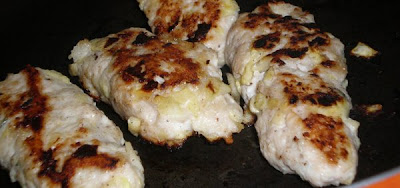 After an incredibly busy few weeks at work, it was a relief to get some time off, and take our first trip out of the city since the fall. We took a train to Nikko, a world heritage site and national park, home of the Toshogu Shrine.
After an incredibly busy few weeks at work, it was a relief to get some time off, and take our first trip out of the city since the fall. We took a train to Nikko, a world heritage site and national park, home of the Toshogu Shrine.
The town is beautiful, and at this time of year, incredibly quiet. Although the mountains were shrouded in mist and low clouds during our stay, the cedar trees that peeked out from time to time were a breathtaking enough sight. We stayed at the Nikko Park Lodge, a cosy and relaxed hostel with a selection of Spanish red wine and a huge music DVD collection - it was like visiting my parents! The cook at work in the kitchen, Nagisa, was clearly proud of the food in the hostel, and justifiably so. Hostel food doesn't have to be great as guests usually don't have much choice, and especially considering most of the sleepy town shuts down permanently at 8pm. The Lodge, however, along with offering some vegetarian a la carte dishes, and sturdy breakfasts perfect for trekking through the shrines and other sites, offers a vegan set menu styled on the traditional vegetarian cuisine of Buddhist monks, shojin ryori.


The set included an individual pot for each diner, filled with shiitake, enoki, maitake, and bunashimeji mushrooms. The mushrooms simmered over a flame in a light broth, along with some yuba, a specialty of Nikko. Yuba is the skin that forms on soy milk, as it is curdled to make tofu. It doesn't sound particularly appetizing to the western palate, but Peter pronounced it delicious, likening it a sweet-tasting cheese curd. My mission to convert Peter to a tofu lover continues apace. He had been quite hesitant about the idea of a vegan dinner, but the large pot of mushrooms won him over almost immediately, and he happily addressed the rest of the meal, which included a tofu "steak"; a slice of firm tofu that had been fried in a soy-ginger glaze; a pot of vegetable miso soup, with carrots and sato imo - a sort of hard-to-describe wild potato with a silky soft texture and potato-y taste; and a large tub of mixed-grain rice.


The whole meal was presented beautifully, in typical Japanese style, and I could barely push myself away from the table at the end of it, I was so full. It was a real treat to try this sort of cuisine, and I look forward to sampling more of it in the future.

There was so much to see in Nikko - we spent two days chasing waterfall views, racing the clouds for visibility- and between the shrines and the natural beauty of the mountains, we kept busy. We dodged school trip delegations from site to site, and, it seemed, had the whole place to ourselves at times. We met our friends, Niamh and Avinder, on the second night and had dinner at the popular Hippari Dako yakitori shop, which has a large international following by the looks of the business cards on the walls. Impassioned testimonials from past visitors thanking the proprietress for her vegetarian offerings gave a clue to the reasons for her popularity amongst the young Eurpoean set; and frankly I have to give her snaps for making them available - who goes to a yakitoriya looking for a vegetarian meal? Not that vegetables aren't usually available, but...her flexibility does her credit, I guess, and probably makes it a lot easier to stay open during the low season. That aside, her tsukune (chicken meatballs) and hot sake were just the thing after a cold, wet day in the rain, staring at misty voids where waterfalls should be. It doesn't get much more zen than that.






























